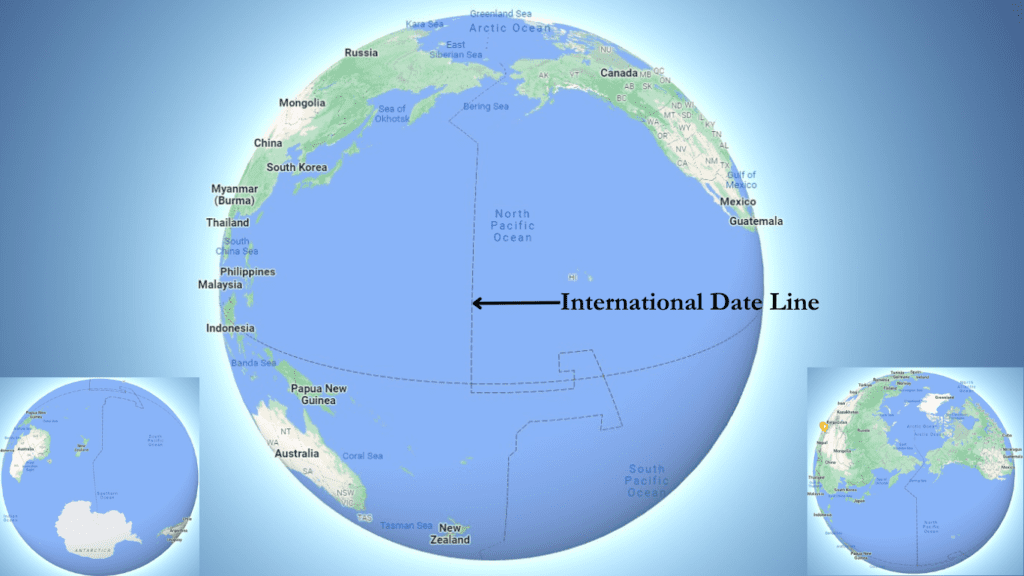
If a traveler is going eastwards from Greenwich, they will be ahead of Greenwich Mean Time until they reach the 180°E meridian, where they will be 12 hours ahead of GMT. On the other hand, if they are going westwards, they will be behind GMT until they reach the 180°W meridian, where they will be 12 hours behind GMT. This means that there is a total difference of 24 hours or one day between the two sides of the 180° meridian. This line is known as the International Date Line, and crossing it changes the calendar date by exactly one day.
When a traveler crosses the date line from east to west, they lose a day due to the time difference they have encountered. Conversely, when they cross the date line from west to east, they gain a day due to the time difference they have experienced. For example, if it is midnight on Friday on the Asiatic side of the date line, crossing it eastwards would result in gaining a day, making it midnight on Thursday on the American side. This means that the traveler experiences the same calendar date twice.
When Magellan’s ship completed its circumnavigation of the world and crossed the date line from the Pacific to the Atlantic in 1522, the crew didn’t know about adding a day for the one they had missed. They thought they had arrived on the 5th of September but were surprised to learn that the date was actually the 6th of September.
An aircraft traveling from Wellington to Hawaii and back experiences the effects of the International Date Line. For example, an aircraft leaving Wellington on Friday at 5:00 p.m. and arriving in Hawaii 4,100 miles away at 2:00 p.m. the same Friday. On the return journey, leaving Hawaii at 6:00 p.m. on Friday, the aircraft arrives in Wellington at 11:00 a.m. on Sunday.
This is because the International Date Line in the mid-Pacific deviates from the normal 180° meridian to prevent confusion of day and date in some island groups that are cut through by the meridian. Some of these islands follow Asiatic or New Zealand standard time, while others follow the American date and time. The International Date Line is shown in Fig. 1.
FAQs
Q.1 What is the International Date Line?
Answer: The International Date Line is a line located at the 180° meridian that separates two calendar dates.
Q.2 How does a traveler’s time change when going westwards from Greenwich?
Answer: A traveler going westwards from Greenwich will be behind GMT until they reach the 180°W meridian, where they will be 12 hours behind GMT.
Q.3 What happens when a traveler crosses the International Date Line from east to west?
Answer: When a traveler crosses the International Date Line from east to west, they lose a day due to the time difference they have encountered.
Q.4 Why did Magellan’s crew think they arrived on the 5th of September when they actually arrived on the 6th of September?
Answer: Magellan’s crew didn’t know about adding a day for the one they had missed when they crossed the International Date Line from the Pacific to the Atlantic in 1522.
Q.5 How does an aircraft traveling from Wellington to Hawaii and back experience the effects of the International Date Line?
Answer: An aircraft traveling from Wellington to Hawaii and back experiences the effects of the International Date Line because it changes the calendar date by exactly one day.
You May Also Like





























